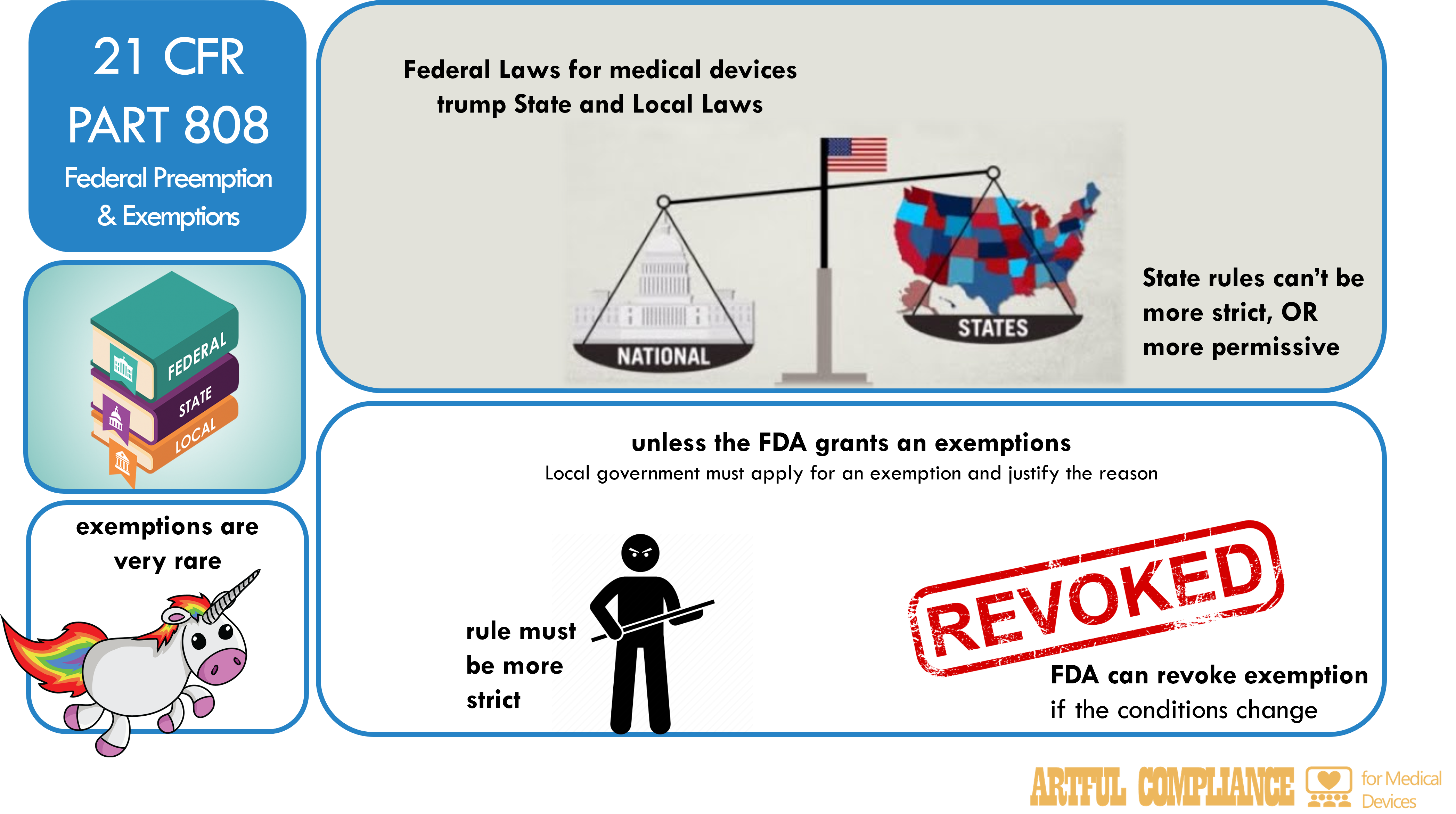Federal Preemption
Have you ever wondered why each State doesn’t have their own laws about medical devices?
21 CFR Part 808, for the most part, preempts (i.e. prevents) states and localities from making their own rules about medical devices, except under certain conditions (exemptions). It provides procedures for the submission, review, and approval of applications for exemption from federal preemption by the FDA.
If preemption is an unfamiliar concept, consider this metaphor.
Imagine a country is represented by a family of four; two parents, a son, and a daughter.
The parents represent the Federal government.
The son and the daughter represent States governments who have to follow the rules.
The parent’s rules are like federal laws and regulations; they apply to everyone in the family and override any other rules that conflict with them. For example, the parents may have a rule that says no one can eat ice cream before dinner. This rule is the same for everyone and cannot be changed by anyone else.
The son’s and the daughter’s rules are like the State laws. They apply only to themselves or their own rooms. For example, the son may have a rule that says he can play video games for an hour every day. This rule is different from the father’s and the mother’s rules, but it does not contradict them, so it is valid.
If the daughter wants a rule that says she can eat ice cream before dinner, this rule contradicts the father’s rule, so it is not valid. This is called preemption. The parent’s rule preempts the daughter’s rule and makes it invalid.
Exemption from Preemption
But what if the daughter has a good reason to have her own rule? For example, what if she has a medical condition that requires her to eat ice cream before dinner? In that case, she may ask the parents for an exemption from their rule.
An exemption is an exception that allows a State to have a different rule that would otherwise be preempted. The parent (Federal government) may grant the exemption if they agrees that the daughter has a valid reason and that her rule is more beneficial for her health or safety. For example, the parent may say that the daughter can eat ice cream before dinner, but only if she has a doctor’s prescription and only a small amount. This is called an exemption from preemption. The parent’s rule still applies to everyone else, but the daughter has a special permission to have her own rule.
To apply for an exemption, a state or locality must send an application to the FDA with various information about the device, the requirement, and the reason for the exemption. The FDA will review the application and publish its decision in the Federal Register, and may revoke the exemption if necessary.
Examples of Exemption From Preemption for Medical Devices
One example of exemption from preemption is the California Radiation Control Law, which regulates the use of radiation-emitting devices, such as X-ray machines, in the state. The FDA granted an exemption from preemption for this law in 1980, because it found that the state law was more stringent than the federal performance standards for radiation-emitting devices, and that it addressed a specific local problem of excessive radiation exposure.
Another example of exemption from preemption is the New York State Department of Health’s requirement for premarket approval of HIV home test kits, which are devices that allow individuals to test themselves for HIV infection at home. The FDA granted an exemption from preemption for this requirement in 1996, because it found that the state law was more stringent than the federal premarket approval process for HIV home test kits, and that it served a compelling local need to ensure the accuracy and reliability of such devices.

Recent Comments